Today’s Current Affairs: 1st July 2024 for UPSC IAS exams, State PSC exams, SSC CGL, State SSC, RRB, Railways, Banking Exam & IBPS, etc
Table of Contents
India’s Forex Reserves : Update
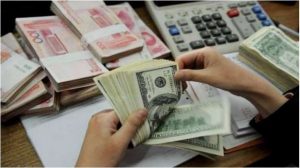
India’s forex kitty jumps by USD 816 mln to USD 653.71 bln
- India’s forex reserves witnessed an increase of USD 816 million, reaching USD 653.711 billion for the week ending June 21, according to the Reserve Bank of India (RBI).
Components of Forex Reserves:
- Foreign Currency Assets (FCA): it is the major component of India’s forex reserves.
- It has decreased by USD 106 million to USD 574.134 billion.
- FCA expressed in dollar terms reflects the effect of appreciation or depreciation of non-US currencies like the euro, pound, and yen.
- Gold Reserves: it has increased by USD 988 million. Total gold reserves stood at USD 956 billion during the week.
- Special Drawing Rights (SDRs): it decreased by USD 57 million. SDRs totaled USD049 billion.
- India’s Reserve Position with the IMF: Decreased by USD 9 million.
- The reserve position was USD 4.572 billion.
Mutual Evaluation Report Of India:
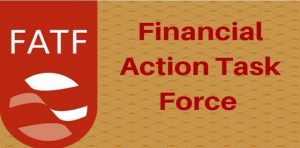
The Mutual Evaluation Report of India, adopted at the FATF plenary in Singapore from June 26 to 28, places India in the “regular follow-up” category, a status shared by only four other G-20 countries.
- This distinction highlights India’s significant progress in combating money laundering (ML) and terrorist financing (TF).
- Financial Action Task Force (FATF) is an inter-governmental policy-making and standard-setting body dedicated to combatingmoney laundering and terrorist financing.
- Objective is to establish international standards, and to develop and promote policies, both at national and international levels, to combat money laundering and the financing of terrorism.
- It was established in 1989 during the G7 Summit in Paris to develop policies against money laundering. In 2001 its mandate expanded to include terrorism financing.
- Headquarters: Paris,France.
- FATF members include 39 countries, including the United States, India, China, Saudi Arabia, Britain, Germany, France, and the EU as such.
- India became a member of FATF in 2010.
Mutual Evaluation Report of FATF:
- The mutual evaluation report is an assessment of a country’s measures to combat money laundering, financing of terrorism and proliferation of weapons of mass destruction
- The reports are peer reviews, where members from different countries assess another country.
- During a mutual evaluation, the assessed country must demonstrate that it has an effective framework to protect the financial system from abuse.
- The FATF conducts peer reviews of each member on an ongoing basis to assess levels of implementation of the FATF Recommendations, providing an in-depth description and analysis of each country’s system for preventing criminal abuse of the financial system.
International North-South Transport Corridor (INSTC):

Russia has sent two trains carrying coal to India through the International North-South Transport Corridor (INSTC) for the first time.
- The consignment will travel over 7,200km from St. Petersburg, Russia to Mumbai port via Bandar Abbas port of Iran.
- International North-South Transport Corridor (INSTC) is a 7,200-kilometer Multimode Transit Route linking the Indian Ocean and the Persian Gulf to the Caspian Sea via Iran and onward to northern Europe via St. Petersburg in Russia.
- It connects ship, rail, and road routes for moving cargo between India, Iran, Azerbaijan, Russia, Central Asia, and Europe.
- It was launched on 12th September 2000 in St. Petersburg, by a trilateral agreement signed by Iran, Russia and India at the
- Euro-Asian Conference on Transport in 2000 for promoting transportation cooperation among the Member States.
- Since then, INSTC membership has expanded to include 10 more countries (total 13)-Azerbaijan, Armenia, Kazakhstan, Kyrgyzstan, Tajikistan, Turkey, Ukraine, Syria, Belarus, and Oman.
Joint Sitting Of Parliament And Leader Of House:
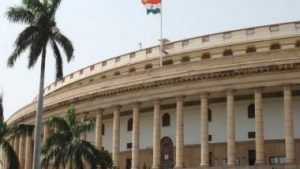
The President of India recently addressed the joint sitting of both houses of Parliament. It was the first time he addressed the newly elected 18th Loksabha.
- A joint sitting involves both houses of Parliament (Lok Sabha and Rajya Sabha) meeting together.
- There are two main types of joint sittings in the Indian parliamentary system.
- First is the presidential address under Article 87 and
- Second is the resolution of legislative deadlocks under Article 108.
- Article 87 of the Indian Constitution outlines when the President addresses both Houses of Parliament.
- The President addresses the Rajya Sabha and Lok Sabha at the beginning of the first session after each general election.
- The President also addresses both Houses at the beginning of the first session of each year.
- The Constitution (First Amendment) Act of 1951 modified Article 87 as follows: In clause (1), the phrase “every session” was replaced with “the first session after each general election to the House of the People and at the commencement of the first session of each year.
National Statistics Day 2024: Theme

National Statistics Day is celebrated in India on June 29 every year.
- National Statistics Day is celebrated in recognition of the notable contributions made by Professor (late) Prasanta Chandra Mahalanobis in the fields of statistics and economic planning.
- The main objective of celebrating Statistics Day is the creation of public awareness, especially among the younger generation, on the role and importance of statistics in socio-economic planning and policy formulation for the development of the country.
- Since 2007, Statistics Day has been celebrated every year with a theme of contemporary national importance.
- The theme for Statistics Day, 2024 is “Use of data for decision-making”.
- The concept of data-driven decision-making is important for making informed decisions in any field, and it is one of the pre-requisites for better understanding of statistical information, emanating from official statistics and for facilitating evidence-based decision making.
Prasanta Chandra Mahalanobis:
- He was born on 29 June 1893.
- He is known as the father of Indian statistics and was an Indian scientist and statistician. His role in India’s post-independence economic planning is undeniable.
Interest Equalisation Scheme:

The Department of Commerce has extended the Interest Equalisation Scheme for pre- and post-shipment rupee export credit for Micro, Small and Medium-scale (MSME) exporters till August 31.
- Interest Equalisation Scheme was first implemented on 1st April 2015, to provide pre- and post-shipment export credit to exporters in rupees.
- It was initially valid for 5 years, up to 31.3.2020.
- The scheme has been continued thereafter, including a one-year extension during COVID and further extensions and fund allocations.
- It is being implemented by the RBI through various Public and non-Public Sector banks that provide pre- and post-shipment credit to the exporters.
- The Scheme is jointly monitored by the Directorate General of Foreign Trade (DGFT) and the RBI through a consultative mechanism.
- The scheme helps the identified export sectors to be internationally competitive and to achieve a high level of export performance.
- An eligible exporter has to submit a certification from the external auditor to the concerned bank to claim this benefit.
- Banks provide IES benefits to the eligible exporters and claim a reimbursement from the RBI based on the external auditor certification furnished by the exporter.
- Currently, the Scheme provides an interest equalisation benefit at the rate of 2% on pre- and post-shipment rupee export credit to merchant and manufacturer exporters of 410 identified tariff lines at 4-digit level and 3% to all MSME manufacturer exporters.
- The Scheme has now been made fund-limited, and the benefit to individual exporters has been capped at Rs 10 Crore per annum per IEC (Import Export Code).
- In addition, the banks that lend to exporters at an average rate of more than Repo + 4% would be debarred under the Scheme.
National Quality Assurance Standards (NQAS) Assessment:

The Union Ministry of Health and Family Welfare launched the National Quality Assurance Standards (NQAS) assessment, Dashboard for IPHS and Spot Food Licence Initiative to provide “Healthcare for All” and promote wellness.
- National Quality Assurance Standards (NQAS) assessment has been launched for Ayushman Arogya Mandirs (AAM) and Integrated Public Health Laboratories (IPHL) in compliance with IPHS standards.
- IPHS is a digital platform for real-time monitoring of public health facilities that provides a comprehensive overview of the assessment and compliance status of public health facilities.
Spot Food Licence Initiative:
- It is for the instant issuance of licenses and registrations through the pan-India IT platform designed to address all food safety regulatory needs i.e Food Safety and Compliance System (FoSCoS).
- This new provision supplements the existing procedures for applying and obtaining licenses and registrations as prescribed under the Food Safety and Standards (Licensing and Registration of Food Businesses) Regulation, 2011.
- Instant issuance of licenses without the intervention of a licensing authority will be available for select categories such as wholesalers, distributors, retailers, transporters, storage without atmospheric control + cold, importers, food vending agencies, direct sellers and merchant-exporters.
- This scheme will not apply to businesses involved in high-risk food categories like milk, meat and fish.
Artificial Intelligence Preparedness Index:

The International Monetary Fund (IMF) released an Artificial Intelligence Preparedness Index (AIPI) Dashboard.
- Artificial Intelligence Preparedness Index (AIPI) assesses the level of AI preparedness across 174 countries.
- The rating for each country is given based on the assessment of readiness in four key areas – digital infrastructure, human capital and labour market policies, innovation and economic integration, and regulation and Ethics.
- The Index has categorised each country into Advanced Economy (AE), Emerging Market Economy (EM), and Low-Income Country (LIC).
- Singapore (0.80), Denmark (0.78), and the United States (0.77) are among the highest-rated AEs,
- India was categorised as an EM with a 0.49 rating. India ranks 72 in a total of 174 countries, with Bangladesh (0.38) on 113, Sri Lanka (0.43) on 92, and China (0.63) on 31.
International Monetary Fund:
- It fosters economic growthand employment by providing temporary financial assistance to countries to help ease the balance of payments adjustment and technical assistance.
- It was formed in 1944 at the Bretton Woods Conferencewith the goal of reconstructing the international monetary system.
RIMPAC Exercise:
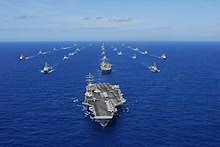
Indian multi-role stealth frigate INS Shivalik, mission deployed in the South China Sea and North Pacific Ocean, has reached Pearl Harbour in Hawaii to take part in the Rim of the Pacific (RIMPAC) exercise.
- Rim of the Pacific (RIMPAC) Exercise is the world’s largest international maritime exercise, being held in Hawaii.
- It is aimed at enhancing interoperability and building trust among the navies of friendly foreign countries.
- It is being held under the theme of Partners: Integrated and Prepared, which runs until August 1.
- It is led by the US Navy, approx 29 countries are participating in the current edition of the multi-dimensional exercise.
- The harbour phase of the exercise from 27 Jun to 07 Jul 2024 will see participation in multiple symposiums, exercise planning discussions, sports competitions and reciprocal deck visits.
- The sea phase of RIMPAC–24, divided into three sub-phases will witness ships undertaking basic and advanced level integration exercises during the first two sub-phases.
- The exercise will witness the participation of an Aircraft Carrier Battle Group, submarines, maritime reconnaissance aircraft, unmanned aerial vehicles, remotely piloted surface ships and also amphibious force landing operations including joint operations with special forces of multinational navies.
- It provides a unique training opportunity while fostering and sustaining cooperative relationships among participants, critical to ensuring the safety of sea lanes and the security of the world’s oceans.
Shyok River: Five soldiers died
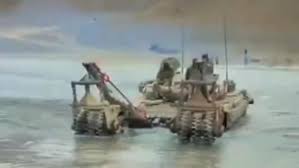
Five soldiers died after a tank was swept away by strong water currents in the Shyok River during military training in Ladakh recently.
- Shyok River is a river that flows through northern Ladakh in Jammu and Kashmir, India and enters the Pakistan-administered region of Gilgit-Baltistan, where it joins the Indus River.
- It is a tributary of the Indus River.
- It originates from the Rimo Glacier; one of the tongues of the Siachen Glacier, and gets its name from a Ladakhi word meaning ‘the river of death’.
- The alignment of the Shyok river is very strange, originating from the Rimo glacier, it flows in a South-East direction and at joining the Pangong range, it takes a north-west turn and flows parallel to its prior path.
- The Shyok, flowing in a broad valley, rapidly enters a narrow gorge after Chalunka and then joins the Indus at Skardu (Pakistan).
- The total length of the river is around 550 km (340 mi).
Pench Tiger Reserve : AI System For Early Detection Of Forest Fires

The Pench Tiger Reserve recently launched an advanced Artificial Intelligence (AI) system for the early detection of forest fires.
- Pench Tiger Reserve is located in the southern reaches of the Satpura hillsin the Seoni and Chhindwara districts in Madhya Pradesh and continues in Nagpur district in Maharashtra as a separate Sanctuary.
- It is named after the Pench River,which flows from north to south through the Reserve.
- It comprises of the Indira Priyadarshini Pench National Park, the Pench Mowgli Sanctuary,and a buffer.
- The area of the Pench Tiger Reserve and the surrounding area is the real-story area of Rudyard Kipling’s famous “The Jungle Book”.
- It is undulating, with most of the area covered by small hills and steep slopes on the sides.
- The undulating topography supports a mosaic of vegetation ranging from a moist sheltered valley to an open, dry deciduous forest.
- The reserve boasts a diverse range of flora, including teak, saag, mahua, and various grasses, and shrubs.
- The area is especially famous for large herds of Chital, Sambar, Nilgai, Gaur (Indian Bison), and wild boar.
- The key predator is the tiger, followed by the leopard, wild dogs, and wolf.
- There are over 325 species of resident and migratory birds, including the Malabar Pied Hornbill, Indian Pitta, Osprey, Grey Headed Fishing Eagle, White Eyed Buzzard, etc.
South China Sea : In News
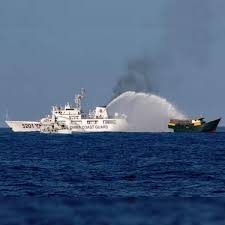
India recently said it opposes unilateral actions seeking to change the status quo by force in South China Sea amid concerns over China’s escalatory moves against the Philippines’ maritime operations in the region.
- South China Sea is an arm of the western Pacific Ocean that borders the Southeast Asian mainland.
- It embraces an area of about 1,423,000 square miles (3,685,000 square km), with a mean depth of 3,976 feet (1,212 metres).
- It is bordered by China, Taiwan, Philippines, Malaysia, Indonesia, Brunei, and Vietnam.
- The southern boundary of the South China Sea is a rise in the seabed between Sumatra and Borneo, and the northern boundary stretches from the northernmost point of Taiwan to the coast of Fujian province, China, in the Taiwan Strait.
- It is connected by the Taiwan Strait with the East China Sea and by the Luzon Strait with the Philippine Sea (both marginal seas of the Pacific Ocean).
- The South China Sea and the East China Sea together form the China Sea.
- The two major archipelagos are known as the Paracel Islands, controlled by China, and the Spratly Islands.
- It is the second most used sea lane in the world. It is a significant trade route for crude oil from the Persian Gulf and Africa through the Strait of Malacca to Singapore, Thailand, Hong Kong, Taiwan, South Korea, and Japan.
Oropouche Fever:

Italy reported its first-ever case of Oropouche fever, a mosquito-borne disease, recently.
- Oropouche Fever is an emerging zoonotic arboviral disease caused by the Oropouche Virus (OROV).
- OROV is part of the orthobunyavirus family, with an incubation period of 4 to 8 days.
- It was first discovered in Trinidad and Tobago in 1955.
- The symptoms of Oropouche fever often mimic those of other viral infections, including fever, headache, muscle pain, joint pain, and nausea.
- However, severe cases can lead to meningitis or encephalitis, posing significant health risks, especially to vulnerable populations.
- Most patients recover in about a week, but for some, symptoms linger for weeks.
- It is spread to humans through the bite of an infected midge (small fly) or mosquito.
- Factors such as urbanization, deforestation, and climate change contribute to the proliferation of its vector, escalating the risk of transmission.
- There are no vaccines to prevent Oropouche fever.
- There is no specific treatment for Oropouche fever.
- Medical care aims to control the symptoms and help with recovery.
Saubhagya Scheme : Notifications To The Former Chief Secretary
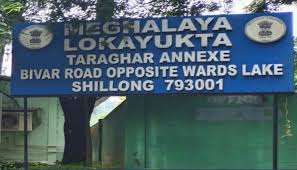
The Meghalaya Lokayukta recently issued notifications to the former chief secretary and other former officials of the Meghalaya Energy Corporation Limited (MeECL) for their alleged irregularities in the implementation of the Saubhagya scheme in the state.
- The Government of India launched Pradhan Mantri Sahaj Bijli Har Ghar Yojana (SAUBHAGYA) in October, 2017
- Objective is achieving universal household electrification, by providing electricity connections to all un-electrified households in rural areas and all poor households in urban areas in the country.
- Under the Saubhagaya scheme, LED bulbs, wire, holders, switches, etc are to be provided to BPL families free of cost.
- Salient features of the scheme were:
- Providing last-mile connectivity and electricity connections to all un-electrified households in rural areas.
- Providing Solar Photo Voltaic (SPV)-based standalone systems for un-electrified households located in remote and inaccessible villages / habitations where grid extension is not feasible or cost effective.
- Providing last mile connectivity and electricity connections to all remaining economically poor un-electrified households in urban areas. Non-poor urban households are excluded from this scheme.
- In the rural areas, families other than BPL family’s electricity connection has to be provided for Rs. 500. The consumer has to pay the amount in 10 equal installments of Rs. 50 in each bill, in the urban areas, the BPL families will be provided free power connection.
- It is a provision that families of rural areas, which are not possible to issue electrical assemblies through grid supply, have to be published through solar energy.
- Rural Electrification Corporation (REC) has been designated as its nodal agency for the Saubhagya scheme.
- The beneficiaries for free electricity connections will be identified using Socio Economic and Caste Census (SECC) 2011 data.




